Recent Water Damage Posts
The Reason a Quick Response to your Water Loss is Important
11/2/2022 (Permalink)
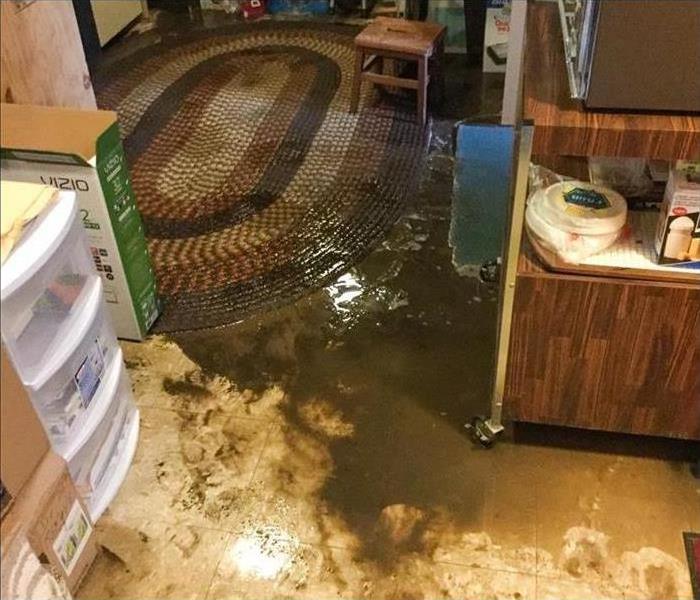 Water damage can cause mold to grow in as little as 48 hours.
Water damage can cause mold to grow in as little as 48 hours.
The Reason a Quick Response to your Water Loss is Important
Water damage is an emergency that needs to be addressed quickly. If you wait to have a professional company mitigate the water damage from your home, then you are putting yourself and your family in danger. Water can cause mold growth and structural damage to floors, walls, and other surfaces of your Bothell, WA home. This will cost you money in repairs down the road if you don't act immediately. In addition, a rapid response gets rid of standing water before it can do any more damage than it already has done by flooding your property with water or sewage overflow.
Water damage goes beyond what is visible
You will be wading through a sea of confusion, but you can take comfort in knowing that you are not alone. You’re going to find yourself asking questions like: “How much damage have I really incurred?” and “Is it safe for me to stay at home?” There is no way around feeling anxious about the state of your home and its contents, but it is important to remember that water damage goes beyond what is visible.
You might see water puddles on the floor or furniture damaged by moisture, but there could be hidden signs of water intrusion throughout your home. For example, behind walls where plumbing lines run through could potentially swell up and cause structural damage from within – even if those pipes look fine from the outside! Hidden mold growth in these places threatens both health and property value over time as well as making future repairs more difficult and expensive.
It can also be hard to determine whether all possible sources of moisture have been eliminated before cleaning up after a flood event because sometimes hidden sources can drip onto surfaces long after they appear dry again – leaving you susceptible for months afterward if not properly addressed immediately upon discovery!
The timing of your response is important
The sooner you call, the better. The longer you wait, the more damage can occur. Water damage can cause mold to grow in as little as 48 hours. If you wait too long, the cost of repairs will be much greater and could potentially result in other issues for your family or tenants.
Quick responses to water damage are critical, as they help to minimize the spread of water and limit structural damage. Water can move quickly through the structure of your property, causing further damages by spreading mold and other microbes that can cause problems. To protect against these issues, it is vital that you act quickly when there is a loss of water at home or commercial property.
You will save money in the long run
It's not just the cost of a quick response that matters; it's also the cost of long-term water damage. The longer you wait to call a professional, the more expensive your water loss will be. Mold is expensive to remove and requires special equipment that most people don't have at home.
We hope that this article has given you some insight into the importance of responding quickly to water damage. Though it may seem like a hassle, calling in a professional company can save you from having to deal with the headaches and costly repairs that can come from not acting fast enough. The experts at SERVPRO of Shoreline/Woodinville will work quickly and efficiently to help mitigate your water loss so that you can get back on track as soon as possible without wasting time or money!
How To Avoid Accidental Activation of Your Fire Sprinklers
7/20/2022 (Permalink)
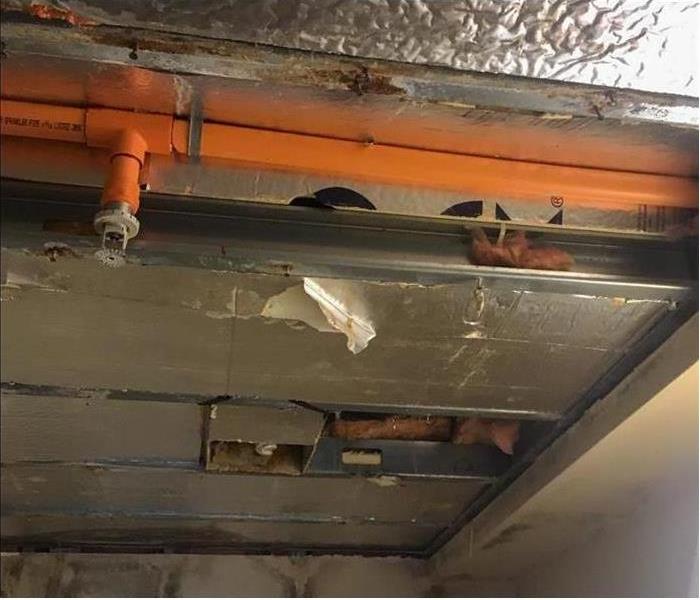 From a minor leak to a natural disaster, SERVPRO of Shoreline/Woodinville is here to help.
From a minor leak to a natural disaster, SERVPRO of Shoreline/Woodinville is here to help.
Thorough and consistent sprinkler maintenance is essential in Woodinville, WA. Not only is maintenance important to ensure your fire sprinkler system operates properly if a fire starts, it is also a key factor in the prevention of sprinkler system malfunctions, including accidental activation. For as much damage as a fire can cause, accidental activation of fire sprinklers can be costly as well. To help prevent unintentional activation of your sprinkler system, keep these five factors in mind.
1. Perform Regular Maintenance
Routine inspections and maintenance must be performed appropriately. Otherwise, regular wear and tear may not be addressed in a timely manner, which can increase the likelihood of accidental activation. Regular maintenance in accordance with National Fire Protection Association (NFPA) standards can help alleviate this risk.
2. Prevent Freezing
If your sprinkler pipes freeze, the ice within them can damage the components of the sprinkler system and trigger accidental discharge of water once the ice melts. Sprinkler pipe routes should be assessed for freeze potential prior to installation. Antifreeze loops can be installed to help prevent freezing.
3. Address High Heat Areas
Identify sprinkler heads located near areas of high heat. Even without a fire, it may be possible for those sprinklers to reach a temperature high enough to unintentionally activate your system. In such locations, you should use sprinklers rated for higher temperatures.
4. Plan Ahead for Aging Parts
As your system ages, corrosion of pipes, fittings, and valves can become a concern. While routine inspections and sprinkler maintenance should identify issues in time to address them, it is important to be aware of these risks and plan for them in advance.
5. Exercise Caution and Care
Treat your sprinkler system with care. Do not hang items from pipes or sprinkler heads, paint over them, or otherwise modify your system without professional support.
Properly installed and maintained sprinkler systems are a key component in mitigating the risk of damage from both water and fire. Every business owner wants to be confident that his or her fire sprinklers will activate only in the event of an actual fire. Regular sprinkler maintenance with careful attention to detail can help prevent accidental activations.
Why Does My Toilet Leak Every Time I Flush?
5/22/2022 (Permalink)
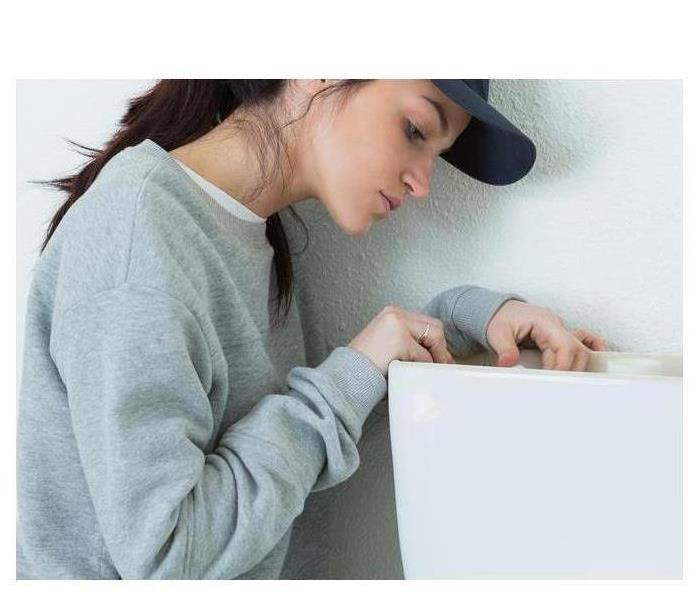 Water from leaking toilets commonly comes from the tank.
Water from leaking toilets commonly comes from the tank.
How To Find The Source Of The Leak On a Toilet
No one wants to deal with a leaking toilet. Most homeowners never give their toilets a second thought and just expect them to work as designed every time they flush. The problem is, that the parts inside a toilet can be faulty or wear out over time. When this happens, the source of the leak needs to be identified and stopped before some serious water damage occurs. If you have a bathroom leak in Lake Forest Park, WA, there are a few things you can do to try to fix it. Here are some tips on how to find the source of the leak.
Where Does It Come From?
Water from a leaking toilet commonly comes from several places:
- Hose attachments
- Underneath the toilet
- From the tank
- Dry wax ring
- Improper installation
- Loose bolts
- Broken tank flange
Identifying where the water is coming from can narrow down the source of the leak. If water is leaking into the subfloor or causing more than a surface water nuisance, you will need the help of a professional remediation service.
Repair or Replace?
Many sources of leaking toilets can be repaired by draining the toilet and replacing the faulty piece or tightening a loose bolt or hose connection. In some cases, it is best to replace the entire toilet before serious water damage occurs. If your toilet has a chrome-plated copper supply tube, it is recommended to replace it with a flexible stainless steel hose. These hoses last much longer and are less likely to spring a leak. While a broken tank flange can be replaced, it is not an easy task and many homeowners prefer the help of a professional.
Identifying the source of the leaking toilet is only the first step. If the leak cannot be fixed or the toilet replaced before water damage occurs, you will need the help of a professional water remediation expert to restore your bathroom to its previous condition.
Critical Actions To Take After a Toilet Overflows
5/17/2022 (Permalink)
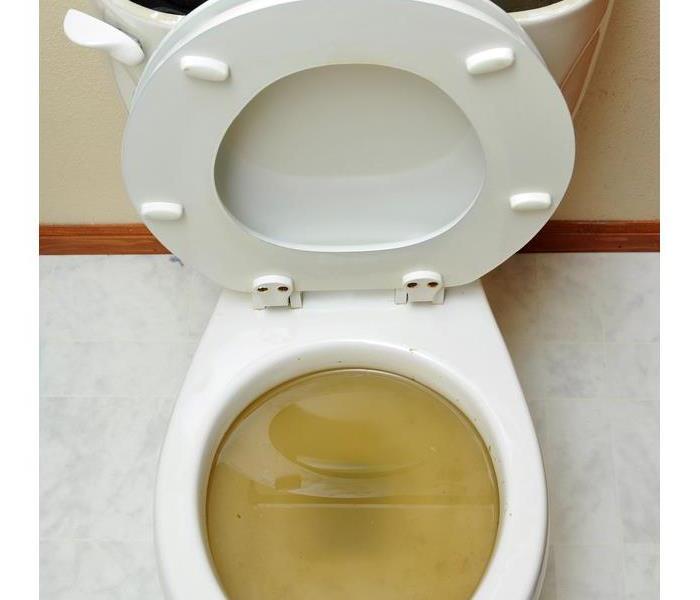 The toilet in your home in Bothell, WA, could overflow for one of several reasons.
The toilet in your home in Bothell, WA, could overflow for one of several reasons.
After a Toilet Overflow, Take These Important Steps
The toilet in your home in Bothell, WA, could overflow for one of several reasons. Sometimes there is a problem with the seal, allowing water to leak out the bottom of the commode. Other times the toilet clogs and water comes out the top, spilling onto the floor. A third possibility involves a sudden breakage of the porcelain which results in a small-scale disaster. In all cases, you have potential sewer damage and must take swift and appropriate actions. Do not rush right into things, as the spill could contain harmful elements that should be kept away from skin contact.
Assess the Severity of the Flooded Toilet
If you cannot stop the flow of water, or if the water has touched carpeting or is seeping into and through the flooring, you have a serious situation on your hands. At this point, you should call for the services of a professional water damage restoration firm. The sewage company experts will send trained technicians to perform the following actions:
- Clean up all standing water with vacuums and pumps
- Dry out moist areas with dryers and ventilation
- Clean and sanitize impacted surfaces
- Restore all damaged structures
Make Sure the Work Is Complete
In addition to cleaning up the sewer damage, the workers will use appropriate PPE such as gloves and masks for increased safety. They will also make sure the humidity of the bathroom is brought down to suitable levels, thus ensuring that mold growth will not occur. The final step of restoration should fix any problems with the toilet. You should be satisfied that things are as they were before the problem began.
Taking care of any type of sewer damage requires specialized equipment and skills and a focus on safety protocols. The job must be done professionally to prevent any additional problems.
Water Damage and Your Business
1/12/2022 (Permalink)
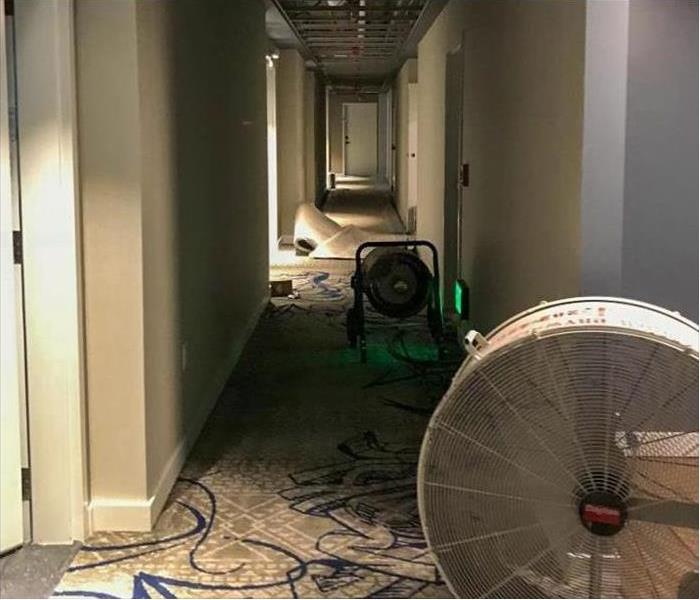 This large commercial property in Shoreline, WA, suffered from an extensive water loss that caused damage to several floors on this property.
This large commercial property in Shoreline, WA, suffered from an extensive water loss that caused damage to several floors on this property.
Your Company And Water Damage
Any prudent business owner in Shoreline, WA, will seek to minimize risks and mitigate damage wherever it occurs. If you find yourself with flooded business premises, take the following steps to begin the recovery proceedings.
1. Understand Your Coverage
Many commercial insurance plans will not cover environmental flood damage, such as the type from heavy rainfall or overflowing rivers, by default. By examining the particular climate risks for your area, you can better assess the potential for damage to your property and make an informed decision about which extensions and packages you may require to bolster your flood coverage.
2. Potential Applications
Once your business is covered, the safety net provided by a strong flood insurance policy is invaluable. Not only do these plans typically pay for the damage caused by high amounts of rainwater entry into the lower floors, they can also assist you in repairing various structural elements such as roofing and gutters that were dislocated or clogged by the rainfall. Depending on the policy and the circumstances of the damage to your flooded business, a pipe break may also be covered.
3. Other Considerations
Most insurers will also pay for a water damage restoration service after the sources of flooding are under control. These professionals can help restore drywall and flooring to its original condition, as well as dehumidify documents and electronics. Your insurer may require that you keep an up-to-date inventory of the affected items as the restoration process progresses in order to verify the costs involved. Note that most flood insurance policies will only begin to cover your business after a month has elapsed from the time of purchase, so it may be beneficial to select a policy quickly if you feel your place of business is at significant risk.
A flooded business can cause downtime and harm customer relationships. Prevent unnecessary damage and disruption by reviewing your flood insurance coverage options.
How To Fix a Leaky Faucet
12/16/2021 (Permalink)
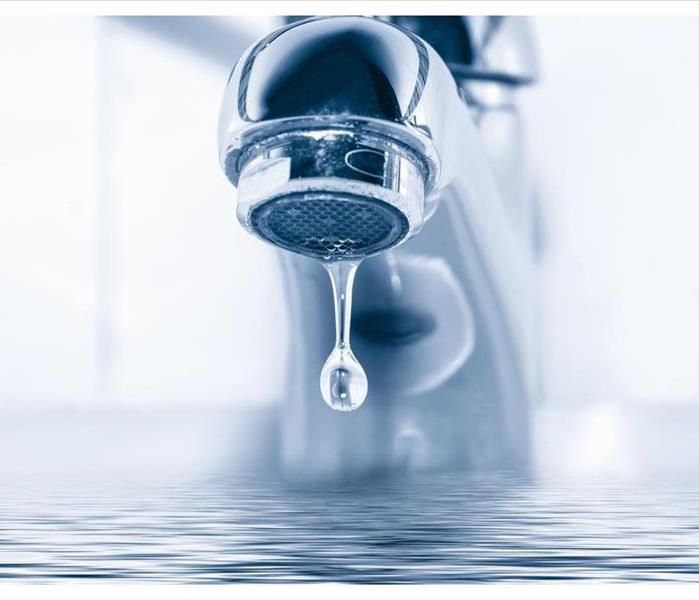 A leaking faucet can lead to water damage or wastage. When you find it in your home, you should act quickly!
A leaking faucet can lead to water damage or wastage. When you find it in your home, you should act quickly!
How To Repair A Faucet That Is Leaking
A leaking faucet can lead to water damage or wastage. Learn how to fix any type of faucet.
Prepare for Repairs
Start by identifying the faucet design. The most common types include:
- Ball
- Cartridge
- Ceramic Disk
- Compression
Shut off the water supply by turning handles on under-sink pipes clockwise. Insert a plug to prevent components from falling down the drain.
Ball Faucet Repair
Ball-type faucets contain many parts. Obtain a ball faucet replacement kit and follow these steps:
- Unscrew and remove handle
- Remove cap and collar
- Remove faucet cam
- Take out washer and ball
- Remove inlet seals and springs
- Replace O-rings, springs, valve seats, and cam washers
Replacement kits contain specialized tools and parts. Purchase a kit from a home repair store.
Cartridge Faucet Repair
Cartridge faucet handles move up and down to regulate flow and left and right to control temperature. Follow these steps to fix a leaking faucet:
- Remove handle or decorative cap
- Remove retaining clip
- Pull cartridge straight up
- Remove faucet spout
- Replace rubber O-rings
Be sure to coat replacement O-rings with plumber's grease. Leaks typically result from worn-out cartridges or O-rings.
Ceramic Disk Faucet Repair
Ceramic disk faucets are durable designs. Follow these steps to repair this type of faucet:
- Unscrew and remove handle
- Remove eschutcheon cap
- Unscrew and remove disk cylinder
- Pry out neoprene seals and soak in vinegar
- Reuse or replace seals
It may be possible to reuse clean seals. Replace damaged seals to stop a leak.
Compression Faucet Repair
Damaged stem assemblies may cause a compression faucet to drip. Follow these steps to disassemble this faucet:
- Remove handles by prying off decorative caps and unscrewing
- Remove nut
- Pull out stem
- Remove and replace seat washer
Inspect the stem assembly for damage. Unscrew the packing nut to check for damaged O-rings.
It is possible to fix any type of leaking faucet. If you are not sure about the design, contact a plumber for a fixed leak. If a dripping faucet causes water damage, contact a cleanup and restoration company in Woodinville, WA.
Is Black Water Really Black?
11/19/2021 (Permalink)
 Water damage at your home can occur from a variety of causes. The difference in the three categories of water is the level of contamination involved.
Water damage at your home can occur from a variety of causes. The difference in the three categories of water is the level of contamination involved.
Is It True That Black Water Is Truly Black?
Flooding at your home in Shoreline, WA, is never a welcome sight. However, some classifications of water damage are more serious than others. The three categories are commonly known as clean, gray and black. How do you know the difference? Can you tell by looking? Is black water really black?
What Does Category 3 Water Mean?
The labels of water refer to the level of contamination present due to the source of the flooding, and not the actual color:
- Clean, fresh water from pipes is considered Category 1 and not contaminated.
- Gray water from dishwashers or washing machines (Category 2) is contaminated with dirt and detergent, but not bacteria.
- Category 3, or black water, comes from highly contaminated sources such as sewage, toilet backflow with feces, river water, seawater or storm water from the ground. Contaminants in the water include microorganisms, bacteria and viruses that can cause serious illness if touched or ingested.
What Are the Benefits of Hiring a Professional?
A water restoration specialist has the training, equipment and specific techniques for dealing with this hazardous water category:
- Protective gear is used to protect the technicians from touching or breathing in airborne viruses from the tainted water.
- The unsafe area of your home is professionally contained during sewage cleanup to prevent both secondary damage and the spread of bacteria to other rooms.
- Porous materials exposed to the soiled water are disposed of and other areas are expertly cleaned and sanitized. Specialized filters clean the air.
Water damage at your home in Shoreline, WA, can occur from a variety of causes. The difference in the three categories of water is the level of contamination involved. Although black water may not necessarily be black in color, it is identifiable by the source typically from sewage or storm water seeping through the ground. In this case, contact a professional to mitigate the damage.
Protect Your Building Envelope
10/4/2021 (Permalink)
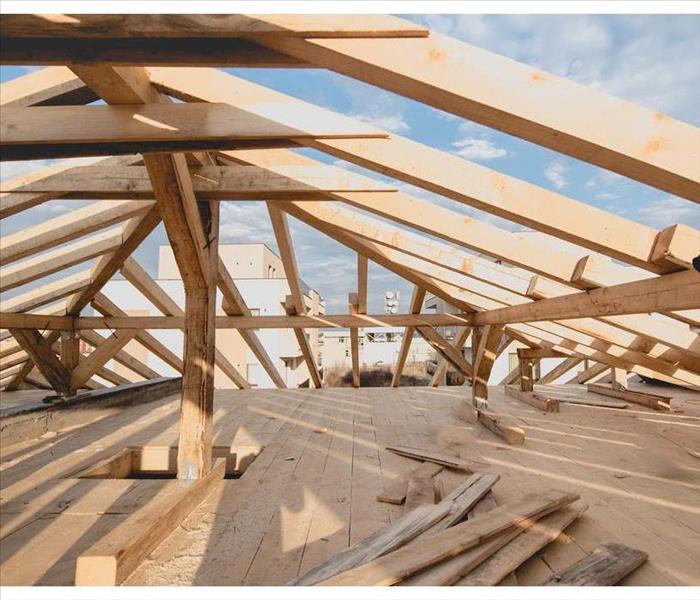 Protect your building envelope.
Protect your building envelope.
Whether you work in an area of the country that gets a lot of rainfall or just a little bit, there are four ways that your building could experience rain damage:
• Bulk Water: Rain, runoff, and other sources of water-driven mostly by gravity
• Capillary Water: Water that moves through channels in the building, usually pulled along through tube-like means
• Airborne Moisture: This includes the humidity in the air whether it occurs naturally or is created by air conditioning
• Movement of Water Vapor: This refers to water from high-humidity sources, such as hot water baths or greenhouses, that move throughout a building to affect low-humidity levels
What Is the Building Envelope?
Without the right waterproofing steps, black mold could develop within the building envelope. As a business owner, you can work closely with water remediation experts to make sure your water is thoroughly waterproofed.
Take a close look at three elements of the building: the roof, gutters, and siding. These are some of the most common areas for water to infiltrate the "envelope." Regular maintenance and ongoing inspections from Shoreline, WA experts can keep these high-risk areas safe and water-tight.
The Roof
This one area of your building is the strongest protector against rain damage. Whether the weather brings rain or snow, that water will probably drop onto your business from overhead, so keep a close eye on the shingles, the underlayment, and any moisture barriers that make up the roof. Pay close attention to how the sun, wind, and falling debris affect roofing materials.
Gutters
This element of your waterproofing system keeps water away from the windows and foundation of your building. Make sure the gutters are in good shape and free of debris.
Siding
Although most rain and snow come from above, the wind can blow some of this moisture against the walls of your building. Whether you have brick, stucco, or vinyl siding, make sure these materials provide a strong barrier against water with proper maintenance.
Rain damage doesn't have to penetrate your building. Locate the most likely trouble areas and work with professionals to prevent damages.
Does Carpet Need Replacing After a Flood?
7/7/2021 (Permalink)
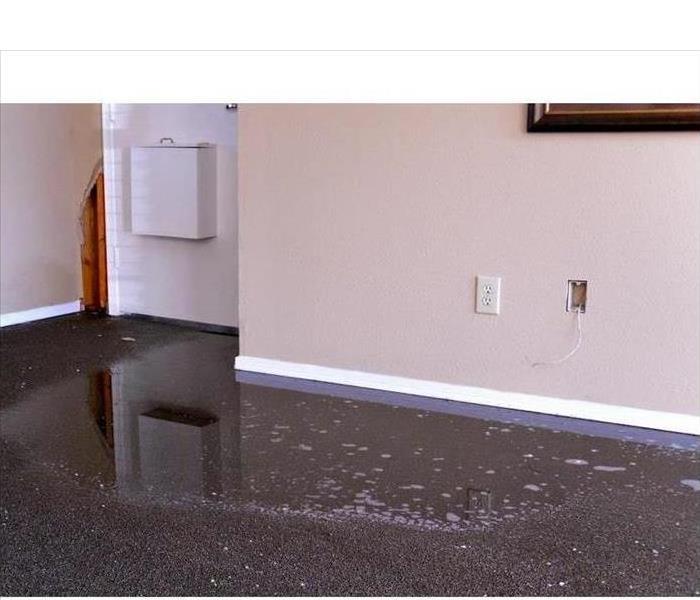 Flooded carpet in Sheridan Beach, WA.
Flooded carpet in Sheridan Beach, WA.
Experiencing flooding in your home in Sheridan Beach, WA, such as from a pipe break or severe weather, can be devastating and exhausting when having to clean up the mess and deal with damages to your belongings and the structure of the house itself. Especially if the flooding happened over a large area of your home, the longer it takes for the area to dry out, the more time mold can set in, which can cause further damage. It’s important to act quickly in these cases (mold can begin growing within 48 hours) while ensuring the damage is thoroughly taken care of.
Clean or Dirty Flood
If you’re trying to determine whether you can save your carpeting, it’s important to know where the water came from and how dirty it was. If the water was from a pipe break or rain, and you can dry out the material within 24-48 hours, it is likely that you can go without replacing it. A flood restoration company has the equipment to ensure carpeting is fully dried out in a timely manner. Carpet pads usually do need to be replaced, however, as they are like a sponge and may be too difficult to dry.
If the flood was caused by a backed-up sewage drain or contaminated river water, you may want to think about replacing the carpet. If there is sentimental value or it’s an expensive rug, a restoration company can take the extra steps to safely decontaminate it, but it’s not recommended that you do this yourself. An improper cleaning job can easily result in mold, disease, and further structural damage if left long enough.
Protect Your Home
Replacing carpeting can be a pain, especially if it’s not necessary, such as in the case of a pipe break. Working with a restoration company can ensure your home is fully dried out before mold has a chance to set in or more damage is done.
3 Common Water Issues in Commercial Buildings
6/30/2021 (Permalink)
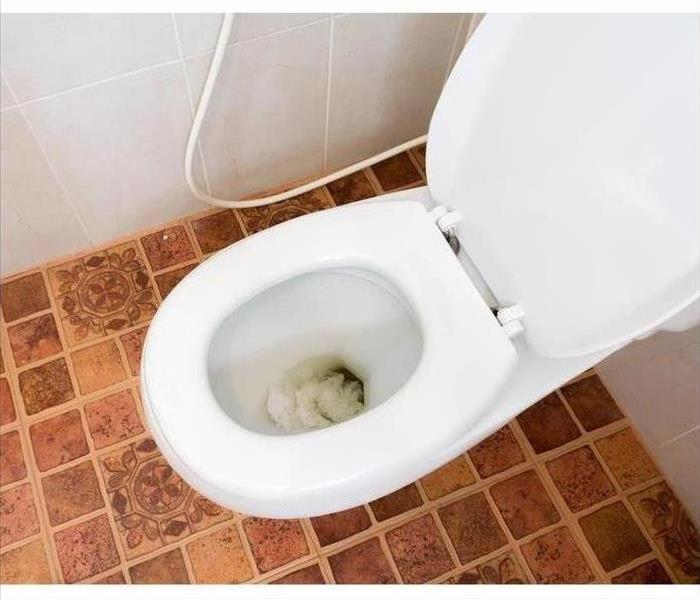 Commercial toilets get a lot of use which means most of them will get clogged occasionally.
Commercial toilets get a lot of use which means most of them will get clogged occasionally.
3 Common Water Issues in Commercial Buildings
One of the most common causes of water damage in commercial buildings is leaking pipes, however, that isn't the only problem to look out for. You may wish to add these three common water issues in commercial buildings to your maintenance routine.
1. Leaking or Running Toilets
According to the EPA, a leaking toilet can waste as much as 3,000 gallons of water a year. Additionally, leaking toilets can lead to water damage and mold. To avoid wasted water, higher water bills, and potential water or mold damage, toilets should be inspected regularly to ensure they aren't leaking or running constantly.
2. Toilet Clogs
Commercial toilets get a lot of use which means most of them will get clogged occasionally. Because clogs can lead to a toilet backup which may cause a flood in the bathroom, it may be wise to regularly check restrooms for clogged toilets and plunge them or call a plumber in Richmond Highlands, WA, to clear clogs.
3. Plumbing Leaks
Freezing temperatures or deterioration can lead to leaking pipes or a pipe break that may cause a flood. Water leaking from cracked or broken pipes or water supply lines is the most common cause of water damage in commercial buildings. These leaks can be difficult to detect because pipes and supply lines are often buried underground or hidden by walls. Because long-term leaks can lead to severe water damage, it can be important to watch for signs of leaks, such as standing water, bulging walls, spongy floors, water stains, and musty smells or mold growth.
Regularly inspecting your commercial property for leaking pipes and other potential sources of water damage can help keep water damage to a minimum. However, if you have suffered a broken pipe or an overflowing toilet, promptly contacting a water damage remediation and restoration company may help prevent further damage to your property.
5 Simple Steps to Flush a Hot Water Heater
6/14/2021 (Permalink)
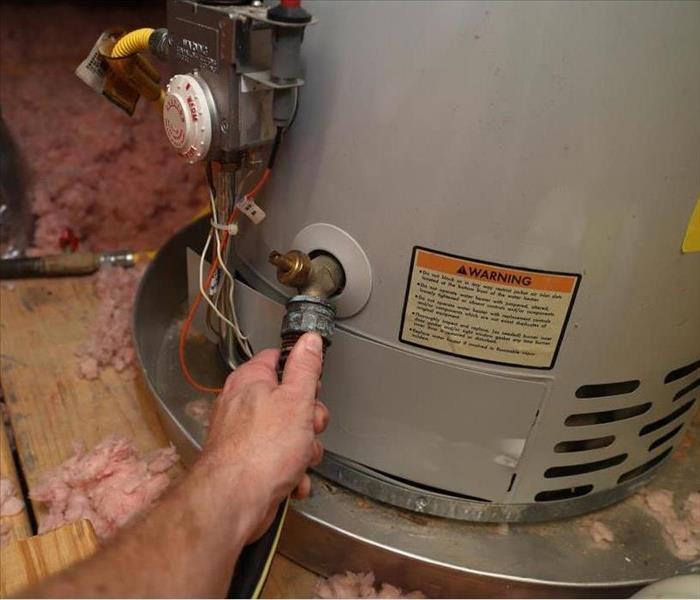 Flushing a water heater in Woodinville, WA
Flushing a water heater in Woodinville, WA
5 Simple Steps to Get It Done Quickly and Easily
To keep your home in tip-top condition and help it last many decades, it requires periodic maintenance. One of the easiest parts is maintaining a hot water heater by flushing it annually. There are 5 simple steps to get it done quickly and easily.
Disconnect the Tank From Utilities
If the unit is electric, shut off the breaker; if gas, use the shutoff valve or, if necessary, shut off the gas at the meter. If you turn it off at the meter, you may have to relight the pilot light on all your gas appliances. Also, turn off the cold water inlet valve to the tank.
Run a Hose From the Drain Valve to a Good Area
The drain valve is located at the bottom of the tank. Connect a garden hose to it and run the hose to an area that can handle many gallons of water. Make sure the drainage is away from the house and that it won’t wash out any features, such as a gravel path.
Drain the Water Heater
It’s best to wait a few hours to let the hot water cool down before draining. Next, open the drain valve on the tank, then the pressure relief valve on top of the unit. Then open one or two hot water faucets. This will allow the tank to empty quickly.
Close All the Valves and Double-Check the Ones on the Tank
Once the water heater flush is finished, close the pressure relief valve and the drain valve. Turn on the water and then immediately check the tank for leaky valves. Wait for the air to pass through the open faucets, then shut them off as well.
Turn on the Power or Gas
If you have gas, make sure any pilot lights are lit. Once again, look for drips around the unit; if you don’t find any, you’re done!
If your water heater has leaked and caused damage in Woodinville, WA, call an experienced water damage restoration company for advice. They can help you with insurance information and get things back to normal quickly.
Why You Want the Pros to Help With Your Water Cleanup
6/9/2021 (Permalink)
 Commercial water cleanup in Woodinville, WA.
Commercial water cleanup in Woodinville, WA.
Water damage doesn't always come from Mother Nature. In fact, many commercial flooding issues in Woodinville, WA, come because of plumbing problems such as leaky pipes or pipe bursts. Sometimes, water can infiltrate your workspace for weeks or months before you notice, leading to massive water clean-up needs. Even in the most difficult circumstances, you can rely on professionals to get your building back in order.
What Cleanup Technicians Offer
If there is minor water damage at work, you may be able to take care of the matter if you notice it right away. However, in most cases, you want a professional flood remediation team to respond. Experienced technicians bring the following to the job:
- Prompt arrival and quick work
- Industrial-grade equipment and proven techniques
- Industry-leading skill and expertise
The Right Credentials
With something as critical as flood cleanup in your office, you can't afford to hire unqualified help. The best companies not only have the abilities you're looking for but the right certifications, too. Make sure the restoration company is a water damage expert certified by the IIRC. Having an Institute of Inspection Cleaning and Restoration Certification means the organization has adhered to high standards and exceeded all requirements of safety. You can have peace of mind that these technicians will be thorough in their inspection and all cleanup processes.
A Comprehensive Approach
Technicians will extract all water from your office and remove damaged materials. A broken pipe can expel a considerable amount of water on the ground and can damage walls, furniture, documents, and electronics. To minimize the risk of mold, a certified drying specialist will ensure that technicians use the proper techniques to dry all areas. The team will also sanitize the affected spaces.
Water clean-up doesn't have to derail your business. If you get certified professionals on the task, you can safely have your office back with as little disruption as possible.
3 Signs That You Need a Hot Water Heater Repair!
3/16/2021 (Permalink)
Water heaters are essential elements of our Shoreline homes. We use them in daily activities such as taking a bath, using the dishwasher and using the washing machine. But because we use them frequently, it’s sometimes easy to take them for granted and forget that they need to be maintained. Failing to do so will result in malfunctions and problems and eventually, replacing your water heater. Taking notice of the first signs of a problem can help you repair your water heater before it becomes worse.
You don’t have to be an expert to spot the first signs of trouble. All you need to have is a keen sense of observation so that your water heater can be repaired.
- Hot water has off smell or off color. The first instance that you notice your hot water has an off smell or has a rusty color, that’s something that you need to check out. The smell could be the result of a rusty anode rod in the water heater. There is no need to worry since the anode rod can be replaced that will then eliminate the bad odor. Bacteria growth also causes bad smells. This happens when the hot water has not been used or has been turned off for quite some time or when the thermostat is set at a very low level.
- Corroded pipes can also cause an off color in your water. This can be solved by installing a water softener or by replacing the plumbing. If you also see a lot of sediments in the water, it’s time to have the water heater repaired.
Water is not hot enough, too hot, not strong enough or there is none at all. When there is no water, check first that your water heater has power and is working fine. If it is, have it inspected by a plumber. If water is not enough, this could be due to an undersized water heater and is a common situation when a lot more people are using the water heater. This could also be caused by the presence of mineral deposits inside the water heater tank. When water is too hot or not hot enough, you may have to adjust the temperature dial of the water heater. If there is no change in temperature, have the water heater checked and repaired.
- Strange noises and leaks. Leaks coming from your water heater could lead to flooding. In the same way, strange noises like pops, bangs, gurgles, and the like are clear indicators that something is wrong with your water heater. This is usually caused by a buildup of sediments inside the tank. A boiling sound, however, could mean the water heater is overheating or that pressure is building up inside the tank. All these have to be addressed immediately to prevent further problems.
It’s important to have your water heater repaired as soon as you see these signs. This will help you save on costs, prevent further damage, and avoid an untimely replacement of your unit. If you do have issues with your hot water heater leaking, call SERVPRO of Seattle Northwest! We are always here to help clean up the aftermath of a disaster!
3 Tips for Snaking a Drain
3/9/2021 (Permalink)
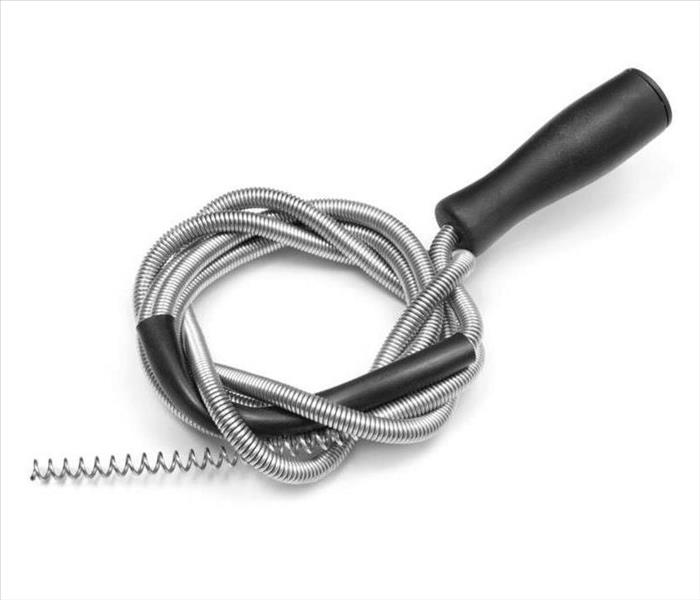 With the right tools, tactics, and practice, you can get your drains cleared on your own in no time.
With the right tools, tactics, and practice, you can get your drains cleared on your own in no time.
3 Tips for Snaking a Drain
Whether you find a clogged kitchen sink or a backed-up shower drain, you are probably not going to be pleased. The last thing you want to do is spending hours trying to get the plumbing flowing again. Fortunately, with the right tools, tactics, and practice, you can get your drains cleared on your own in no time.
1. Get the Tools for the Job
To snake your drain, you are going to need a snake. These are available in any hardware store in Woodinville, WA, and should help you avoid a pipe break or other disaster. That being said, most clogs can be remedied with a metal coat hanger found in most closets. To use this, disassemble the coat hanger, so it becomes a fairly straight strip. Be sure to leave the original hook shape on one end so you can catch the debris that is causing your frustration. If you have slender pipes, you will want to squeeze the hook and make it narrower so it will fit.
2. Add Hot Water
If your drain is clogged after trying to use the snake dry, run boiling water through the pipe. Fill a tea kettle and bring it to a boil on the stove. Then, slowly pour the hot water down the drain. This process may take a minute, but it should help loosen the debris.
3. Add Chemicals
If snaking and hot water fail, try chemicals. Caustic soda is one chemical that will do a number of the remaining debris in your plumbing. Follow the mixing instructions on the bottle that you buy. Stir the mixture until it starts to fizz. Then, pour it down your clogged drain and wait for it to work its magic.
If you've got a stopped drain, you need to follow these tips. Otherwise, you could wind up with a disastrous situation that requires water remediation professionals to clean up. Be sure to start with a snake or coat hanger. If the clog is a tough one, you may need to add hot water or chemicals.
What To Do If There Is Water Leaking From a Light Fixture
12/11/2019 (Permalink)
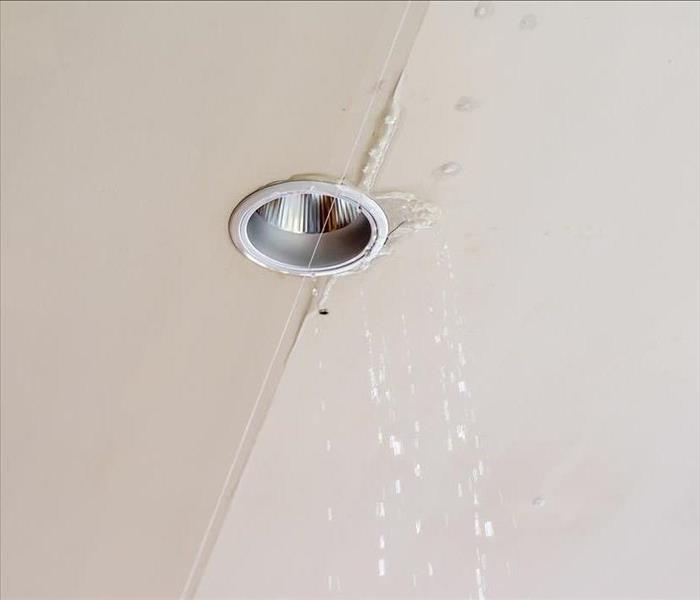 If you see water in a light fixture, you need to turn off the power immediately
If you see water in a light fixture, you need to turn off the power immediately
If There is Water In a Light Fixture, Take the Following Steps
If your home in Sheridan Beach, WA, has been damaged by water, there are quite a few issues that you might be dealing with. If there are multiple levels, water on an upper floor can sometimes end up leaking through into the ceiling beneath it. When this happens, it can create a dangerous situation. If there is water in a light fixture, take the following steps.
1. Turn Off the Electricity
Electricity and water do not mix well, so if you see water in a light fixture, you need to turn off the power immediately. Do not attempt to turn off the light with the switch, as this can potentially create a spark that is both unsafe and can cause further damage. Instead, use the breaker to turn power off to the whole building.
2. Turn Off the Water
Depending on where the water is coming from, you may need to turn the water off as well. If the source is an overflowing toilet, sink or bathtub, then you should avoid using anything that will cause the water to continue running. If it is the result of a broken pipe or water line, you will likely need to turn off the supply of water to the house.
3. Call a Professional
Because of the potential safety hazards involved with water in light fixtures, this is not a problem that you should attempt to fix on your own. You should call a professional electrician to examine the area and make any necessary repairs. Do not turn the electricity back on or attempt to use the light until it has been deemed safe.
If water in your home has resulted in ceiling damage, you should hire a water damage remediation company to do restoration. They can repair the source of the water as well as any damaged areas of the building. Be sure to take the necessary safety precautions if electrical objects have been affected.
Homeowners 101: Understanding Different Water Types
11/6/2019 (Permalink)
 Knowing the source of the water in your home is key to knowing how to handle cleanup.
Knowing the source of the water in your home is key to knowing how to handle cleanup.
Water is invaluable - but only when it’s clean. Contaminated water can instead pose a major health threat. Surprisingly, there are many ways water can be contaminated, and each can pose different threats to your Shoreline, WA home. Keep reading to get answers.
Different Types of Water
While the composition of all water is the same, the source and what materials it has encountered, are not. The main three categories of water are:
Clean water
Gray water
Black water
The first is a safe life giver. But the other two can be laden with toxins that can have serious health repercussions. The key is being able to recognize and address each one.
Clean Water
Clean water is straight forward. Not to be confused with drinking water, clean water is what you may encounter from roof leaks, appliance malfunctions or tub overflows. This water doesn’t contain human or animal waste and is only a threat for its potential to cause mold or mildew. This type of water is typically safe to remove on your own.
Gray Water
This type of water is a little bit murkier. Like its name suggests, it falls between good and bad, typically mildly contaminated. The source is typically sump pump failures, or supply line malfunctions with toilets or dishwashers. At this point, the contaminated water may contain just a few bacteria or germs, but it should still be professionally removed.
Black Water
This water typically contains urine or feces, due to coming from toilets or natural sources like a flood from a river or lake.
Use these tips to figure out what if contaminated water is in your home, then talk to a water damage specialist to schedule proper removal.





 24/7 Emergency Service
24/7 Emergency Service














